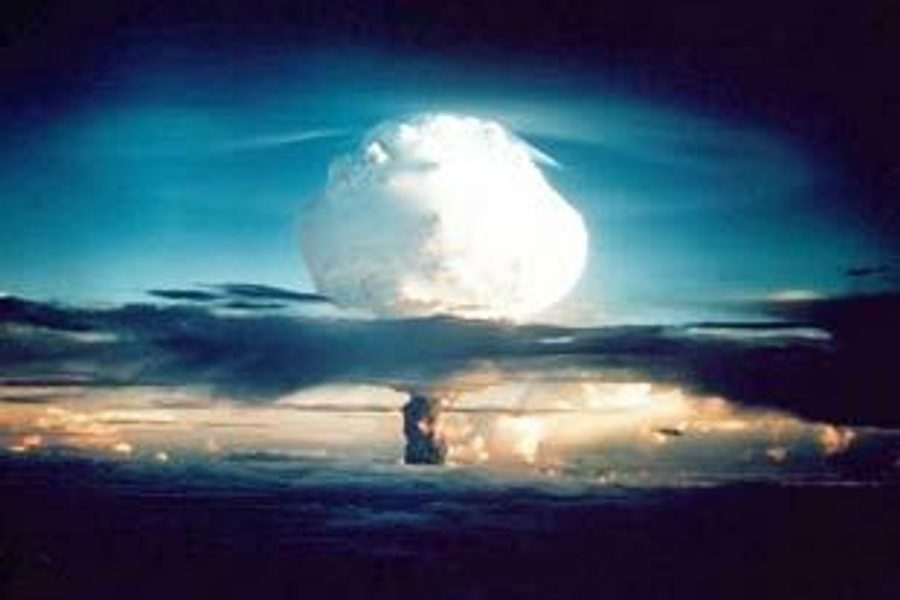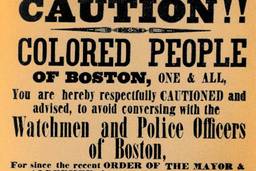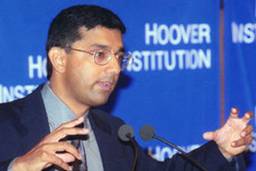Hiroshima: The Falsehood Fallout
As the 60th anniversary of Hiroshima arrives, two recent books examine the history of atomic weapons
Phyllis Eckhaus

When George W. Bush declared war on Iraq to destroy Saddam’s nonexistent weapons of mass destruction, he was following the great American tradition of the Big Lie. Sixty years ago, when President Harry Truman announced to the American public that the first atomic bomb had been dropped on Hiroshima, he told a whopper, describing the city as “a military base” targeted “because we wished… to avoid…the killing of civilians.” Yet Hiroshima was not a military base; the Bomb had been deliberately dropped without warning on the city center, instantly leveling it and incinerating as many as 75,000 men, women and children. Another 125,000 died more slowly, many of them rotting inside-out from radiation poisoning.
Truman also claimed that the Bomb was our one way to compel Japanese surrender and that its use on Hiroshima and Nagasaki saved half a million American lives. Yet as Gerard DeGroot observes in The Bomb, his caustic compendium of the history of nuclear weaponry, weeks earlier the United States had intercepted Japanese peace feelers to the Soviets. Japan was probably prepared to surrender on conditional terms-but the United States would accept only unconditional surrender.
The real target of the Bomb was the USSR. At Yalta, the Soviets had agreed to invade Japan in exchange for concessions in Asia-and the Russians were due to invade by August 15. The U.S. rush to nuke Japan allowed America to renege on that agreement. Analyzing the impact of the Bomb less than a year later, the United States’ own Strategic Bombing Survey challenged the claim that the Bomb ended the war, asserting “certainly prior to 31 December 1945, and in all probability prior to 1 November 1945, Japan would have surrendered.”
DeGroot lingers over the ludicrous lies churned out by government propaganda agencies in the ’50s, when housewives were told that “good housekeeping is one of the best protections against fire in a nuclear attack” and schoolchildren were taught that ducking under wooden desks would save them from immolation. Like today’s random searches of mass transit riders, yesterday’s elaborate civil defense plans were theatrical sham, doing nothing to increase public safety. He points out that the push for each American family to build its own basement fallout shelter presumed not only that everyone had a basement, but that the Soviets would courteously refrain from attack until families were home. Then as now, the government promoted an ideology of private self-help that maximized public vulnerability.
Thanks to DeGroot’s fluid style and ear for absurd detail, The Bomb is often bracingly amusing. But his equal opportunity sarcasm has the unfortunate effect of trivializing peace protests as “feeble and … self-indulgent” freak shows. His presumed pragmatism upholds the status quo by ridiculing the relative few who dare to challenge it. Yet every radical justice movement-from abolition to suffrage-started on the fringe.
DeGroot also gives short shrift to the profiteering that underwrites the arms race. He quotes the admission by Ronald Reagan’s former scientific advisor, George Keyworth, that the whole argument for “Star Wars,” the Strategic Defense Initiative, was “a pack of lies, unadulterated lies,” but relegates to a footnote the fact that almost 90 percent of the funds from this multi-billion dollar boondoggle went to just 10 defense contractors.
In The Ruin of J. Robert Oppenheimer and the Birth of the Modern Arms Race, Priscilla J. McMillan also overlooks the greed that fuels the continuing buildup of the American arsenal. She focuses narrowly on the McCarthy-era yanking of Oppenheimer’s security clearance, claiming that the trumped-up charges “resulted in the removal from public life of the one individual who might have restrained our catastrophic rush to over-armament.” Her tale of ruthless Washington opportunists lying, lawbreaking and generally ganging up on a perceived foe in order to consolidate power and intimidate enemies sounds awfully familiar. But to characterize these events as exceptional seems painfully naive, rather like the “great man” notion that Oppenheimer could have single-handedly halted the arms race. To the extent that Oppenheimer had influence, maybe we’re lucky it was diminished, as his promotion of smaller, “tactical” nuclear weapons seems a recipe for making nuclear war acceptable.
Perhaps the best passage in McMillan’s heavy-handed tome is when she confronts an FBI agent in a blatant falsehood, revealed through now-declassified documents-and he lets loose with a rant against the Freedom of Information Act. Power deceives and all governments lie. Yet with the dawn of the atomic age, the potential impact of a lie grew to encompass the destruction of the planet. DeGroot and McMillan expose the dangerous and deceptive machinations of government but seem to dismiss the only possible effective counterforce: an informed and angry citizenry.







